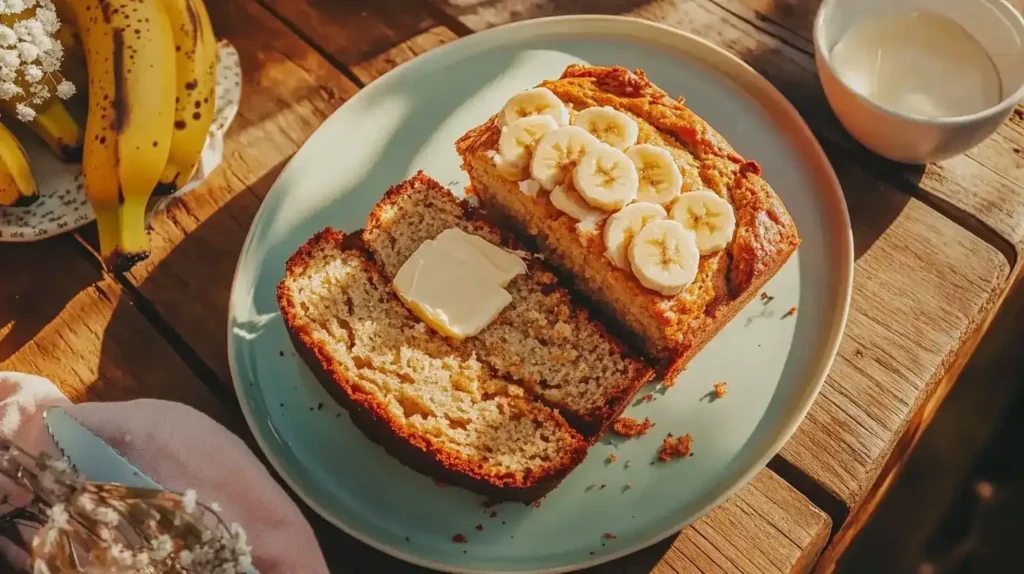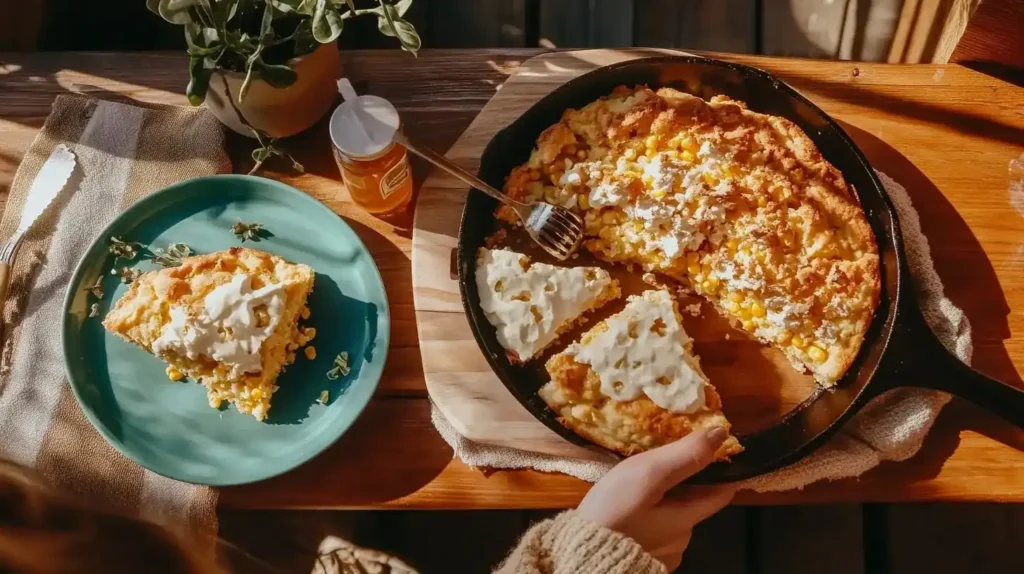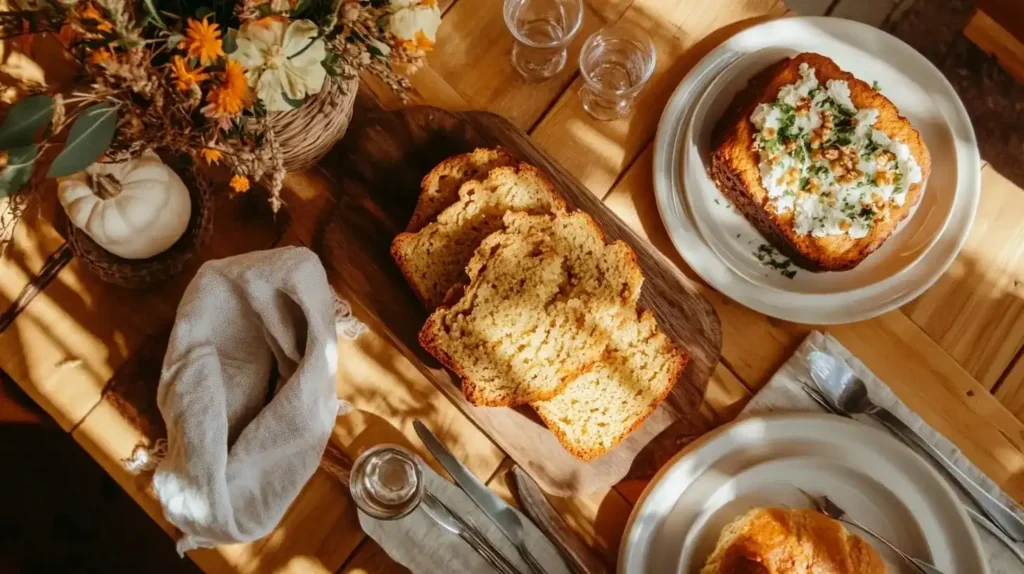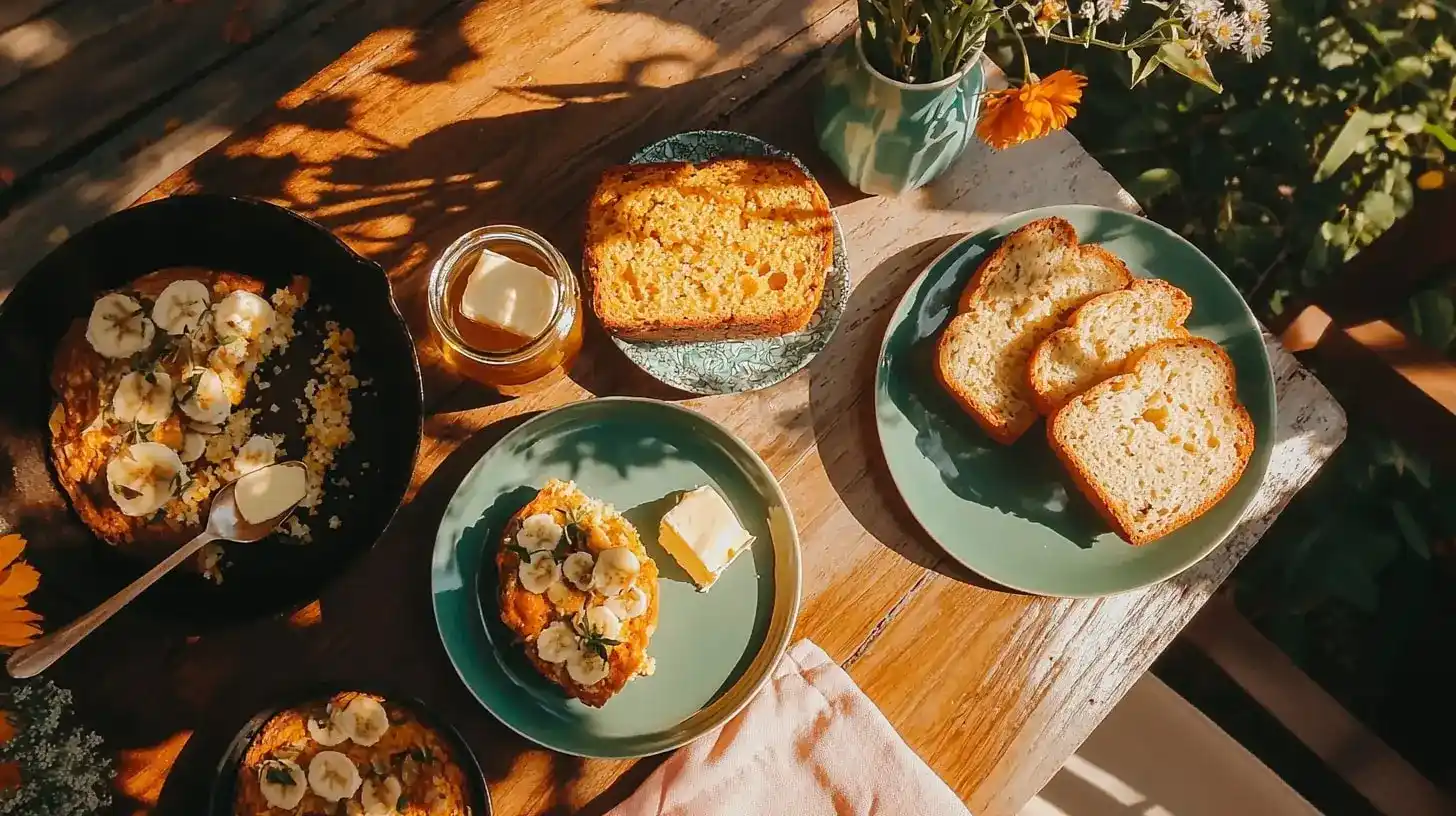There’s something almost magical about the scent of bread baking in the morning. It’s one of those sensory memories that stays with you—the way my grandmother’s kitchen would fill with that intoxicating aroma of warmth and comfort as sunlight streamed through her lace curtains. Standing on a little wooden stool beside her, I’d watch in wonder as she transformed simple ingredients into something that felt like love made tangible.quick bread recipes
“Bread is the heartbeat of a home,” she’d tell me, flour dusting her hands like delicate snow. It wasn’t until I became a busy mother myself that I truly understood what she meant. Now, with three little ones tumbling through our morning routine, quick breads have become my secret weapon for creating those same feelings of warmth and comfort, even on our most hectic days.
Table of Contents
Why Quick Bread Recipes are Perfect for Busy Families
When my daughter Lily asked why we call them “quick bread recipes,” I explained that unlike traditional yeast breads that need time to rise, these special recipes rise with baking powder or baking soda instead. The look of wonder on her face mirrored my own childhood curiosity, creating one of those beautiful full-circle moments that motherhood brings.
quick bread recipes are truly the busy parent’s best friend in the kitchen. They require minimal hands-on time, use ingredients you likely already have in your pantry, and create that made-from-scratch feeling that no store-bought alternative can match. Even on mornings when we’re rushing to school drop-offs and work meetings, the simple act of slicing homemade banana bread brings a moment of connection to our breakfast table.
Banana Bread: The Comfort Classic That Never Fails

My love affair with banana bread began in my mother’s compact apartment kitchen. As a working single mom, she didn’t have much time for elaborate cooking, but she refused to let that stop her from creating homemade comfort. Her banana bread recipe—now splattered and worn on an index card I treasure—became the foundation for my own baking adventures.
“The secret,” she’d whisper as if sharing classified information, “is using bananas that look too far gone.” Those dark, spotted bananas that most people would toss are actually perfect for baking—sweeter and more flavorful than their prettier yellow counterparts. This little lesson taught me to look for potential where others might see waste, a philosophy that extends far beyond the kitchen.
My Ultimate Banana Bread Recipe has evolved from my mother’s original, adapting to my family’s tastes and the constraints of our busy mornings. The look of delight on my children’s faces when they wake to that distinctive aroma is worth every minute spent mashing bananas the night before.
For those mornings when the fruit bowl offers fewer bananas than the recipe calls for, my Banana Bread with 2 Bananas recipe saves the day. And on days when I realize we’re out of butter but the bananas are perfectly overripe, Banana Bread with Oil steps in without missing a beat.
Southern Cornbread: A Heritage of Simplicity

My grandmother’s cast iron skillet has its own history, seasoned by decades of use and carrying the flavors of generations before me. Nothing came from that skillet more frequently than her golden cornbread, its crisp edges giving way to a tender crumb that made even the simplest meals feel special.
“Cornbread doesn’t need much fussing,” she’d say, measuring ingredients by feel rather than cups and spoons. “The less you handle it, the more it’ll thank you.” This wisdom—letting simple things remain simple—has guided my approach to both cooking and life as a mother.
Our Best Southern Cornbread honors that tradition of simplicity. Unlike its sweeter Northern cousin, Southern cornbread celebrates the natural flavor of corn with just enough buttermilk to add a gentle tanginess. The hot cast iron skillet creates that signature crisp bottom crust that makes this humble bread so irresistible.
When my son asked why our cornbread doesn’t taste like the sweet version served at his friend’s house, it opened a wonderful conversation about regional cornbread differences and how food tells the story of place and culture. These kitchen moments become unexpected opportunities for connection and learning.
Pumpkin Bread: Capturing Autumn in a Loaf

The first cold snap of fall always sends me reaching for the canned pumpkin in our pantry. Something about the warm spices and rich orange batter feels like pulling on a favorite sweater—comfortable, familiar, and perfectly suited to the season.
My mother didn’t bake pumpkin bread—her repertoire was focused on the essentials that could fit into her limited time and budget. It wasn’t until I was in college that my roommate introduced me to this fall classic, her family recipe appearing like clockwork when the leaves began to turn. That first slice—still warm from the oven and fragrant with cinnamon and nutmeg—began a tradition I’ve carried into my own family.
Now, my children help measure the spices, taking deep ceremonial sniffs of each one before adding them to the bowl. Even my youngest, barely tall enough to see over the counter, insists on stirring the batter, her little face serious with concentration. These simple moments of togetherness are woven into the bread as surely as the spices themselves.
Creating Your Own Quick Bread Recipes and Traditions
Simple Quick Bread Recipes Anyone Can Master
The beauty of quick bread recipes lies in their forgiving nature and endless adaptability. When my daughter wanted to add chocolate chips to our banana bread, or my son suggested stirring fresh blueberries into the batter, these experiments became new family favorites. The kitchen becomes a laboratory for creativity, teaching children that cooking is as much about joy and expression as it is about following recipes.
During a particularly busy season when my work deadlines collided with school projects and sports practices, I discovered the power of the “night before” preparation. Measuring dry ingredients into a bowl and covering it with a cloth, setting out the baking pan and measuring spoons—these small steps made morning baking possible even on our most chaotic days. Sometimes, when time allows, I’ll prepare the batter entirely and refrigerate it overnight, ready to pour into the pan as the oven preheats with the dawn.
How Quick Breads Bring Families Together
Some of our most treasured family conversations happen around slices of still-warm bread. There’s something about the comfort of homemade food that opens hearts and loosens tongues. My normally reserved middle child shares school stories over zucchini bread that would never emerge during direct questioning. My oldest has deep philosophical discussions with me as we clean up the baking mess together.
When we gift loaves to new neighbors or friends going through difficult times, we extend that circle of comfort beyond our kitchen walls. My children learn that food made with love can communicate care when words feel inadequate.
The recipes themselves become a form of family storytelling—”this is Grandma’s cornbread” or “this is the banana bread Mommy made when she was little.” In a world that moves increasingly fast, these connections to our past anchor us and provide a sense of continuity and belonging.
Starting Your Quick Bread Journey
If you’re new to baking quick bread recipes, start with a simple banana or pumpkin recipe. Their moist batters are particularly forgiving, and the sweet flavors appeal to even the pickiest eaters. Don’t worry about perfection—even slightly overdone edges can be trimmed, and a less-than-perfect appearance doesn’t impact the taste or the love that went into making it.
Remember my grandmother’s wisdom: good baking comes from practice, not perfection. Each loaf teaches you something for the next one, and even the “failures” usually taste delicious.
The most important ingredient in any quick bread isn’t listed in the recipe—it’s the intention behind it. When we bake with love, seeking to nourish both bodies and hearts, that energy infuses the food we create. In our busy, often fragmented lives, the simple act of making bread becomes a way of making home, one loaf at a time.
I’d love to hear about your quick bread recipes traditions. Which recipes have become part of your family’s story? What little adaptations make them uniquely yours? The beauty of home baking lives in these personal touches and shared memories.
With warmth, Sophia
FAQ: Quick Bread Baking
Q: Can I freeze quick breads?
A: Absolutely! Most quick breads freeze beautifully for up to 3 months. I slice the cooled bread before freezing, then wrap individual slices in plastic wrap. This lets us thaw only what we need for breakfast or lunchboxes.
Q: My quick breads often sink in the middle. What am I doing wrong?
A: This usually happens from opening the oven door too early in baking (causing a temperature drop) or slightly undermixing the batter. Try waiting until at least the halfway point before checking on your bread, and make sure your leavening agents (baking soda/powder) are fresh.
Q: Can I make quick breads healthier?
A: Yes! Try substituting applesauce for half the oil, using whole wheat flour for part of the all-purpose flour, or reducing the sugar by ¼ cup. Adding grated zucchini or carrots boosts nutrition while keeping bread moist.
Q: How do I know when quick bread is done?
A: Insert a toothpick into the center—it should come out clean or with a few moist crumbs, but no wet batter. The top should be golden brown, and the bread should pull slightly away from the pan’s edges.

